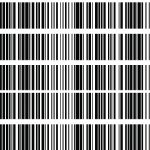Whether driven by regulatory factors or brand protection, the food industry has adopted advanced monitoring and management technologies to maintain and support modern day food safety cultures and operations within companies. This type of technology utilizes checklists and sensors designed to monitor and gather data. Typically, these are built into handheld devices that store collected information in the cloud. The stored data is instantly accessible for management to monitor. Additionally, the FDA demands that two years worth of records be on hand during an inspection. Instead of sorting through copious piles and file drawers of paper, the information can be pulled directly from the database and presented to the inspectors.
In an effort to improve the operation, food companies should adopt new processes to be proactive and ditch the old days of manually tracking and recording temperature data. Utilizing this type of technology ensures consistency, transparency and quality. Not to mention the increase in efficiency and savings over time.
Perhaps the most powerful technological methodology to implement is using the Internet of Things (IoT) to improve processes in the supply chain. How is IoT relevant for a food safety strategy? In an integrated approach to food safety, IoT temperature sensors dispersed throughout the cold and hot food chain, coupled with a food safety/task management system for taking HACCP (Hazard Analysis and Critical Control Points) required food safety temperature measurements, provides unprecedented visibility and traceability, for an end-to-end food safety strategy for grocery stores or restaurants. It’s worth noting that customers are not necessarily looking for an IoT solution when they start the process for acquiring a solution for monitoring coolers/freezers or grills, but for an automated temperature monitoring system whose data is cloud-based and just so happens to be available via the internet.
Data from IoT sensors dispersed through the food chain is continually collected and analyzed to ensure temperatures do not exceed pre-defined limits. These limits are based upon HACCP guidelines. The collected data is then subsequently stored electronically for a period specified by the user, typically up to two years from the collection date per FSMA regulations. If a temperature measurement falls outside pre-defined limits, an alert via text or SMS can be sent to the end-user for corrective actions. Recent developments in IoT have also coupled active monitoring with predictive analytics to determine appliance health.
Should an issue occur in the food chain, food safety data would then be correlated with transactional data to not only define when a limit was exceeded, but to potentially trace the impact to the consumer or in- store sales/profitability. Additionally, high or low sales of a specific item could also be equated to how the item is prepared.
Utilizing checklists that guide operational efficiency, powered by IoT technologies is not only limited to food safety. The capabilities of IoT can be deployed for task management or facilities maintenance practices such as entry/exit applications, facility maintenance/sweep logs, CO2 sensing (beverage and condiment), customer queue length for ordering or check out and incident reporting—when the documentation of an incident is required should a customer or employee incur an injury within the facility.
The implementation of comprehensive end-to-end food safety and task management strategy utilizing remote monitoring based upon IoT promises to provide businesses with a new cornerstone for building a comprehensive and preemptive food safety and facilities plan. By meeting the strict requirements of HACCP regulations, companies can continually reduce operational expenses, decrease waste and potentially predict events that could affect the food chain and subsequently the consumer. An integrated approach to food safety utilizing a food safety/task management system with IoT can positively influence all consumers within the restaurant, grocery and food chain realms.







